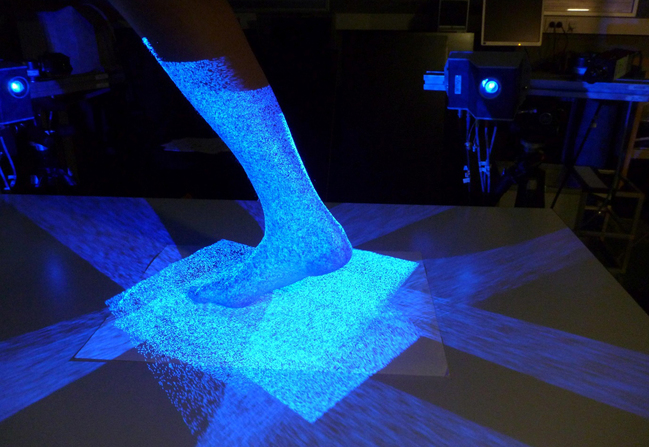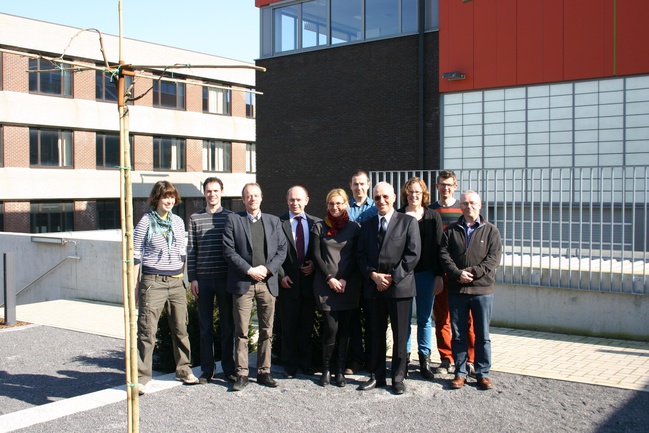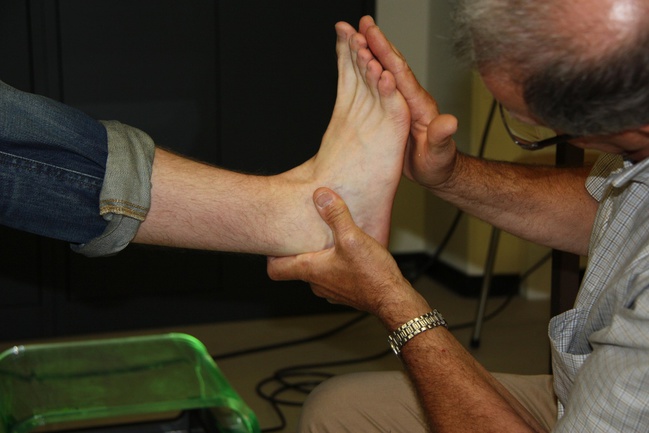Use of cookies
Cookies help us to provide our services. By using our website you agree that we can use cookies. Read more about our Privacy Policy and visit the following link: Privacy Policy


Biomechanical and physiological parameters are key points for innovative shoe design and the prevention of foot problems. This includes the adaptation of shoe structure and shape to individual foot posture as well as the optimisation of the microclimate surrounding the foot skin by selecting proper shoe materials. The CORNET project FOOTyWEAR concentrated on these aspects with the aim of supporting the shoe manufacturers in designing innovative footwear.
Firstly, an innovative method to classify feet into unbiased foot types according to foot shape and the unrolling movement of the foot was developed in Belgium-Flanders. Currently available and recently developed measuring techniques such as 3D dynamic scanning and advanced mathematical analysis techniques have been used to optimise the dynamic fitting of a shoe, avoiding prominent pressure points or an abnormal gait pattern.


Secondly, a set of materials was analysed by the Polish partner with respect to hygiene and wearing comfort. This was done by simulating several parameters that determine the foot microclimate. Furthermore, chemical safety of shoe materials was an important field of analysis, together with the migration of hazardous substances towards the foot skin. The goal was to optimise footwear materials with regard to temperature, humidity and foot skin health.
By combining the competencies of both project partners, the assessments of dynamic foot type and suitable shoe materials allow a well-founded and appropriate selection of shoes, contributing to the prevention of (overuse) injuries, foot deformities, skin wounds and foot diseases.
For shoe manufacturers diabetic patients are a very demanding target group as they suffer from problematic wounds due to both biomechanical and physiological factors. Moreover, due to the ageing of the population and a rising number of associated diseases (e.g. diabetes mellitus or rheumatoid arthritis), the demands in this area are increasing exponentially.


The research done in FOOTyWear is of great value for orthopaedic shoe technologists, physicians and rehabilitation scientists. In particular, the method for foot type classification will serve as an important innovative aid for adequate diagnosis and treatment of foot related problems and pathological foot conditions, as well as the design of orthopaedic devices, insoles and shoes. The interest of the entire shoe and foot health sector was tangible on the SME user committee, which consisted of 28 SMEs in total.
2012-2014
Mario Broeckx, Thomas More University College, email: mario.broeckx@thomasmore.be
Detailed information about research results is available on http://footywear.mobilab.be/en.
Mobilab – Multidisciplinary Research Lab for Biomedical and Rehabilitation Technology at Thomas More University College (Coordinating Association and Research Organisation)
PIPS – Polish Chamber of Shoe and Leather Industry (Association)
IPS – Leather Institute Lodz (Research Organisation)
Pictures: © Thomas More University College